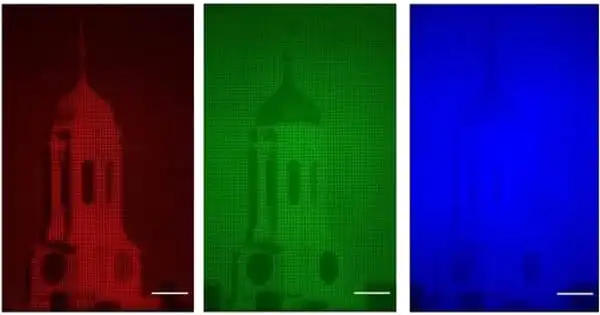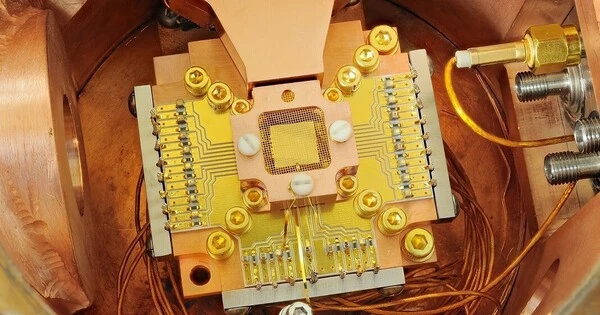Multiple polarisation channels are used in new research to perform parallel processing, increasing computing density by several orders of magnitude over conventional electronic chips. Light has an exploitable property in that different wavelengths of light do not interact with each other, which is used by fiberoptics to carry parallel data streams. Similarly, different polarizations of light have no interaction. Each polarization can be used as a separate information channel, allowing for more information to be stored in multiple channels and significantly increasing information density.
Researchers at the University of Oxford developed a method that uses light polarisation to maximize information storage density and computing performance using nanowires in a paper published in Science Advances.
Light has an exploitable property in that different wavelengths of light do not interact with each other, which is used by fiberoptics to carry parallel data streams. Similarly, different polarisations of light have no interaction with one another. Each polarisation can be used as a separate information channel, allowing more information to be stored in multiple channels and significantly increasing information density.
We all know that the advantage of photonics over electronics is that light is faster and more functional over large bandwidths. So our goal was to fully exploit the benefits of photonics combined with tunable material to achieve faster and denser information processing.
June Sang Lee
‘We all know that the advantage of photonics over electronics is that light is faster and more functional over large bandwidths,’ said first author and DPhil student June Sang Lee of the University of Oxford. So our goal was to fully exploit the benefits of photonics combined with tunable material to achieve faster and denser information processing.’
In collaboration with Professor C David Wright of the University of Exeter, the research team created a HAD (hybridized-active-dielectric) nanowire out of a hybrid glassy material that exhibits switchable material properties when illuminated with optical pulses. Each nanowire responds selectively to a specific polarisation direction, allowing information to be processed using multiple polarisations in different directions at the same time.
Using this concept, researchers created the first photonic computing processor that makes use of light polarisations.

Photonic computing uses multiple polarisation channels, which increases computing density by several orders of magnitude over traditional electronic chips. Because these nanowires are modulated by nanosecond optical pulses, computing speeds are faster.
Since the invention of the first integrated circuit in 1958, packing more transistors into a given size of an electronic chip has been the go-to method of increasing computing density – known as ‘Moore’s Law.’ However, with Artificial Intelligence and Machine Learning necessitating specialized hardware that is pushing the boundaries of traditional computing, the dominant question in this area of electronic engineering has been ‘How do we pack more functionalities into a single transistor?’
For more than a decade, researchers in Professor Harish Bhaskaran’s lab at the University of Oxford’s Department of Materials have been investigating the use of light as a computing medium.
Professor Bhaskaran, who led the work, said: ‘This is just the beginning of what we would like to see in future, which is the exploitation of all degrees of freedoms that light offers, including polarization to dramatically parallelize information processing. Definitely early-stage work, but super exciting ideas that combine electronics, non-linear materials and computing. Lots of exciting prospects to work on which is always a great place to be in!’
The future is visual. Photonic processors promise lightning-fast calculation speeds with much lower power requirements, and they have the potential to revolutionize machine learning. Photonic computing is, as the name implies, a computer system in which optical light pulses, rather than electrical transistors, serve as the foundation of logic gates. If it can be made to work in such a way that processors of a practical size can be mass produced, it has the potential to revolutionize machine learning and other types of computing tasks. The word “if” is highlighted. However, some intriguing-sounding products are on their way to market and have the potential to drastically change things.
















